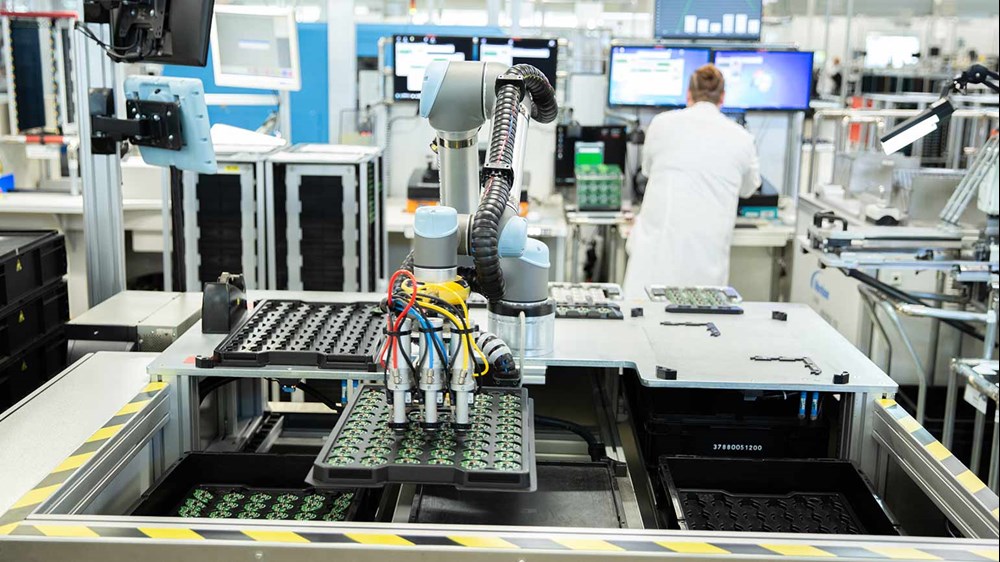The short answer is yes. Automation generally creates greater employee satisfaction and well-being. But there are of course several parameters that must be met for collaborative robots (cobots) to actually increase safety for employees.
Countless work tasks, where you have traditionally had challenges with the working environment, can be made far healthier in collaboration with modern technology. Manual work with many repetitions and unsuitable working positions wears out the employees, both physically and mentally. The same applies to tasks that require heavy lifting or unilateral movements, and work that involves dust or toxic substances.

Examples of tasks that put unnecessary strain on your employees:
- Heavy lifting and other hard physical tasks.
- Inappropriate working postures, e.g. for tasks in hard-to-reach places.
- Repetitive monotonous and one-sided movements.
- Tasks involving toxic substances.
- Dusty working environment.
- Manual hard work, e.g. with twisting of the wrist or sanding with vibrating sanders.
Better work environment
When the tasks that are risky for people are solved with automation, it benefits the work environment in several ways. The employees are relieved physically, but they also get a healthier mind, since the robot can also take care of the tasks that are considered boring and monotonous. In this way, employees can focus to a greater extent on more value-creating and complex work tasks.
A better work environment minimizes the risk of occupational injuries, as only the robot performs the risky work tasks. The employees also experience less attrition and more varied tasks, which contributes to fewer sick days. With automation, production also becomes more efficient, so there can be a significant financial gain for the company by implementing cobots.
It is important to remember that we do not automate jobs, but tasks and functions. Good automation is therefore based on the employees’ professional knowledge and skills, and a cobot must be seen as a colleague and not a replacement.
Collaborative robots benefit workplace safety
Cobots are complex robots designed to work alongside humans. A cobot has built-in safety systems and advanced sensors that make the robot stop at the slightest touch. However, a risk assessment must always be made to define good work practices and ensure that the robot is adapted to the daily routine of production. Here you can e.g. look for sharp edges or cutting tools, hot work, and places where there is a risk of collisions between robot and employee.
After the initial safety and risk assessment, there are still a number of safety measures that need to be taken care of. It must be ensured that:
- employees are thoroughly instructed in working with a cobot
- ensure that the cobot meets the standard requirements for safety as a minimum
- continuously assess the safety of the working environment around the cobot
CE marking and ISO standards
When implementing a cobot or other new technology there are new safety standards and procedures. There is no technology that can just be unpacked and put into use.
In all automation, the usual industry standards and safety measures must be followed. All equipment entering production must be CE marked. However, it is not enough that the individual components are CE-marked. As soon as several components are built together or electrically connected to existing equipment, a safety assessment and CE marking of the overall solution must be carried out in order to be able to operate the machine in daily life.
A CE marking means that the product complies with the requirements of all applicable directives. This is usually, but not limited to:
- CE-marking
- Machinery Directive
- EU regulations
You can carry out the CE marking yourself or get an external adviser to assess compliance with applicable directives.
An international safety standard, ISO/TS 15066, has also been drawn up, which describes the requirements for the robot and the working environment. The standard supplements the requirements for collaborative robots in ISO 102181 and ISO 102182.
Once this has been taken care of, the robots can be safely started.
Get expert advice for a safer workplace
Is your production ready to implement automated solutions to increase safety and enhance work satisfaction? We can quickly find out. Contact us for a non-binding discussion about your options.
Then you can quickly see whether your production is ready for automation.
